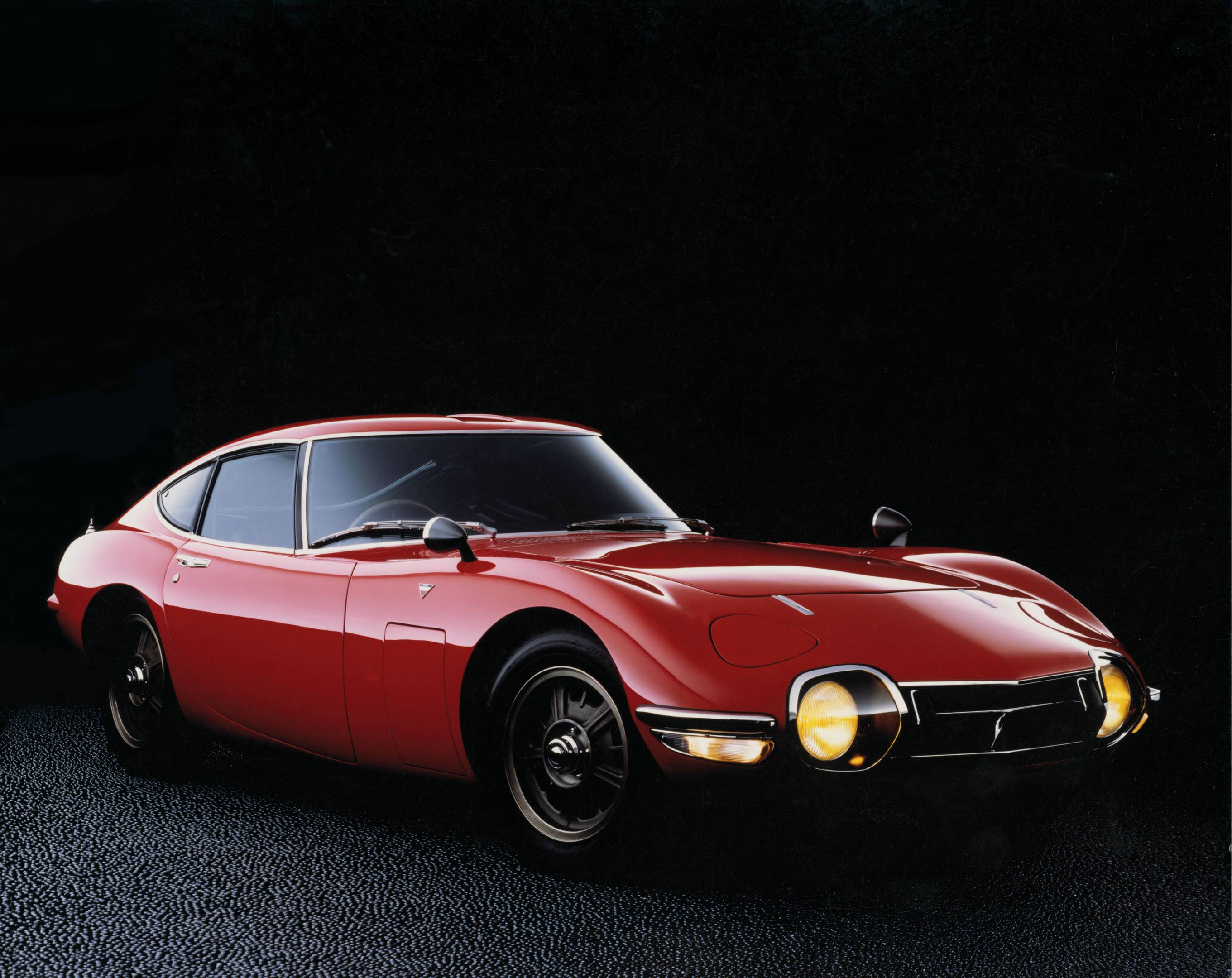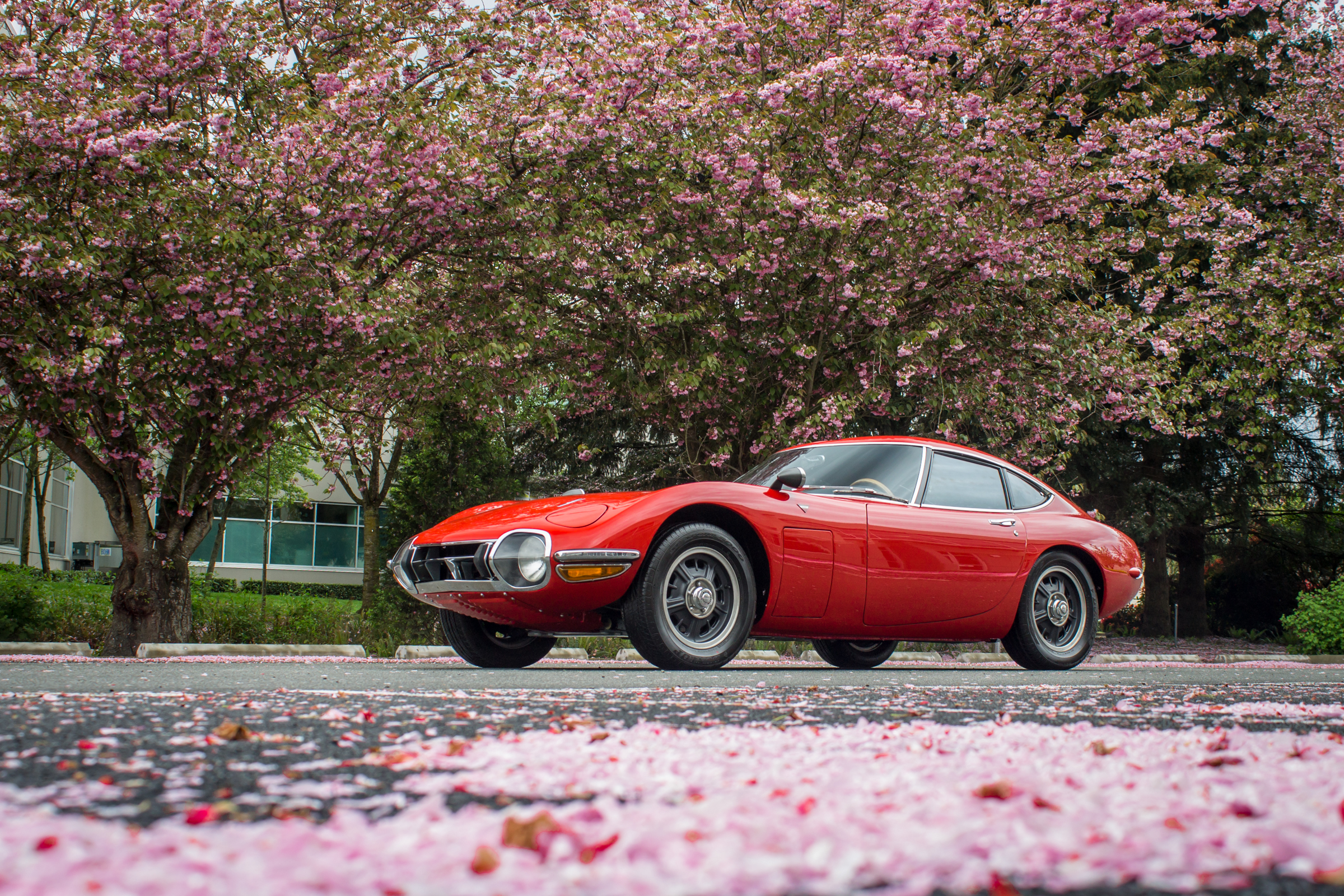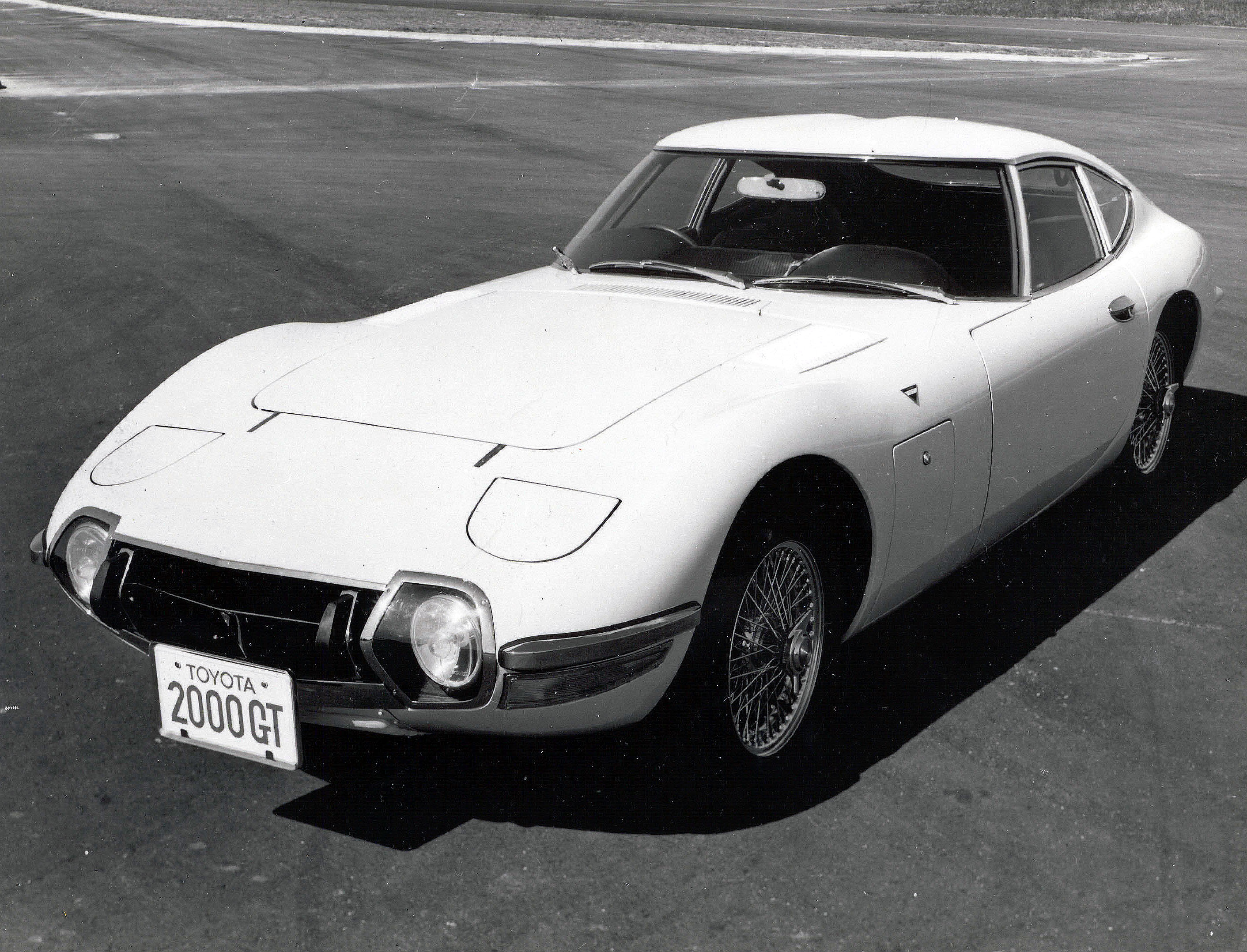Made in Japan: Groundbreaking Toyota 2000GT still beautiful at 50
Doc Brown: “No wonder this circuit failed. It says, “Made in Japan.”
Marty McFly: “What do mean, Doc? All the best stuff is made in Japan.”
Doc Brown: “Unbelievable.”
—Back to the Future, Part III
Would you dig deep into your pockets to buy a Japanese-made automobile? Something like the Lexus LC500, which comes with a 471-hp 5.0L V-8 and a $92,995 price of admission? We expect jewel-like interior quality, unrelenting reliability, and excellent resale. In a modern Lexus, that’s almost a given. However, during the ’50s and ’60s, we (and the 1955 version of the fictional Doc Brown) mostly expected junk.
And then, as if from nowhere, along came the Toyota 2000GT. Suddenly, the country that was producing disposable and homely sedans had produced a genuine supercar. The 2000GT was as sleek as a Jaguar E-Type, as nimble as a Porsche 911, and nearly as expensive as a Ferrari. Penned by Satoru Nozaki, the 2000GT’s flowing shape had the expressive beauty of Japanese calligraphy. At just 45 inches tall, it was low-slung, sleek, and utterly unexpected.

First shown at the Tokyo Motor Show in 1965, the 2000GT really captured the world’s attention in 1967’s You Only Live Twice. As piloted by the capable Aki, a gleaming white 2000GT convertible nearly outshone the Bond girls on screen. However, the convertible was a bit of movie magic: all other production 2000GTs would be coupes.
Further, the 2000GT would back up its superstar looks with genuine performance. We’ll get to feats of strength in a minute, but first, it’s time to address the elephant in the room. The reason the 2000GT was such a departure for Toyota was that it wasn’t really a Toyota at all. It was a Yamaha, and the partnership between the two companies would be linked to essentially every great Toyota that followed.
To muddy the issue even further, we begin the 2000GT’s story with Nissan’s attempt at building a 2.0-liter sportscar. The designer of the gorgeous BMW 507, Albrecht Goertz, was hired on by Nissan from 1963–65 in a joint venture with Yamaha. While that car (code-named A550X) was never produced, Goertz’s views undoubtedly inspired both Nissan and Yamaha designers. Nissan would later acknowledge Goertz’s influence on the beloved Datsun 240Z.
As for the 2000GT, it took inspiration both from the A550X and the Toyota Sports 800, a little two-seat sportscar that competed with the Honda S600 and Datsun Fairlady. From its shape, it is not hard to see that the 2000GT’s design team must have had a few Jaguar E-Type posters up in the breakroom.
Power came from a 2.0-liter straight-six engine lifted from the Toyota Crown. Yamaha’s expertise in metallurgy, developed as a result of their history of making musical instruments, helped develop a new DOHC aluminum head that brought power up to 150 horsepower, an increase of 40 hp. Yamaha would continue the tradition of improving sporting Toyota engines right through to the Lexus LFA and beyond.




A handmade aluminum body added exoticism to the 2000GT’s construction, and everything else was cutting edge for the time. A limited slip differential was standard, the suspension was independent front and rear, and there were disc brakes at all four corners. Yamaha also called on its piano-making division to create a gorgeous lacquered wood dash.
To prove the reliability of their machine, Toyota invited an FIA representative to officiate over a world record attempt. Over 72 hours at the Yatabe Test Circuit, while enduring monsoon conditions, a yellow-and-green-painted 2000GT managed to set an average speed of 128.76 mph. In the process, it broke 16 existing endurance records. A 2000GT would also place well in the 1966 Japanese Grand Prix, and later won the 1967 Fuji 1000km race.
Further success was expected when the 2000GT entered into U.S. SCCA racing, set against rivals like Porsche and Triumph. Here though, Toyota made a mistake. Initially offering the racing contract to Peter Brock’s BRE, Toyota executives changed their mind at the eleventh hour. Instead, they decided to have Carroll Shelby head up their three-car team; Shelby’s personal charm and recent success at Le Mans sealed the deal.
Unfortunately for Toyota, Brock wasn’t the type to roll over. After some back-channel communications using his influence with Hino, BRE was funded to field Datsun Fairladys in SCCA racing. While the Fairladys were classed below the 2000GTs and didn’t always compete head-to-head, a little racecraft helped keep the 2000GTs off enough podiums that they’d eventually finish second to Porsche. Considering this a loss of face, Toyota withdrew the cars from racing.
The 2000GT was also not much of a commercial success. Only 351 were ever produced, a result of the car’s high cost and slow, hand-made construction. Even fewer came in left-hand-drive, and most examples are carefully tucked away in museums and collections. However, we do have the keys to this lovely red LHD model, so let’s go for a quick spin.
The cockpit is impossibly tight, but visibility is pretty good. The steering and shift action are low effort, and the car feels light on its feet. The engine is absolutely marvelous, as only a perfectly balanced, small-displacement inline-six can be.
Like the Porsche 959, the Toyota 2000GT was a harbinger of the future. In terms of lasting effect, you could argue that it was the slightly-related and far more common Datsun 240Z that really changed the world’s mind about the viability of the Japanese car. Or maybe we should credit all those tough little Datsun and Toyota pickup trucks that proliferated throughout California in the early days.
Either way, the 2000GT was Japan’s first supercar, and whenever one is offered it at auction fetches a million dollars of more. Though rare, its historical importance at the half-century mark can’t be overstated. The 2000GT was perhaps the first car that hinted “Made In Japan” wasn’t going to be an epithet much longer.







Made in Europe, copied in Japan.